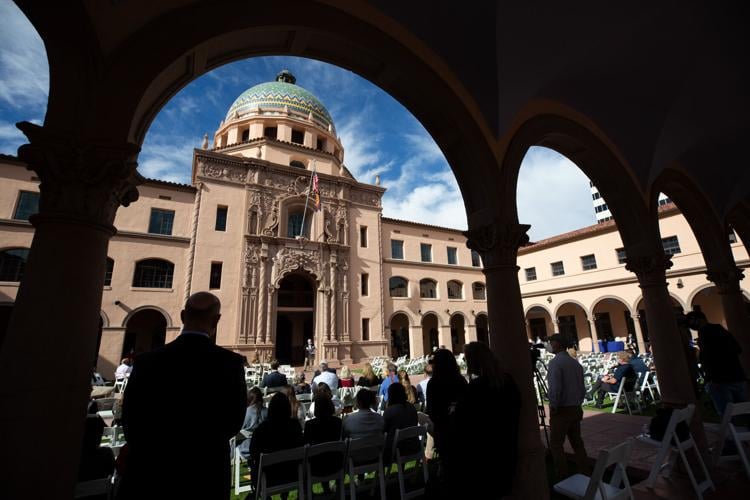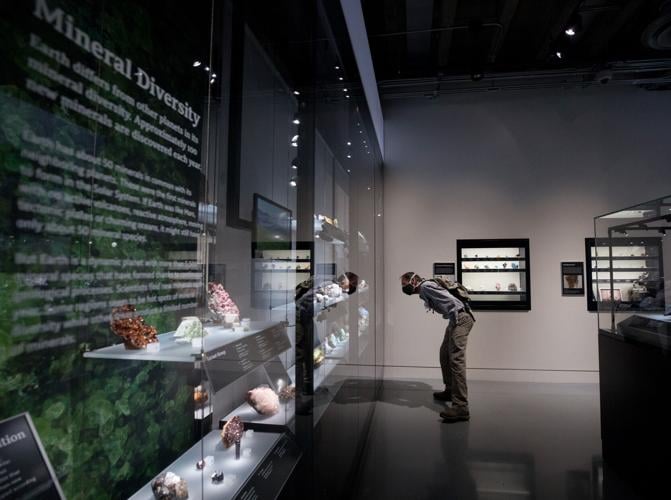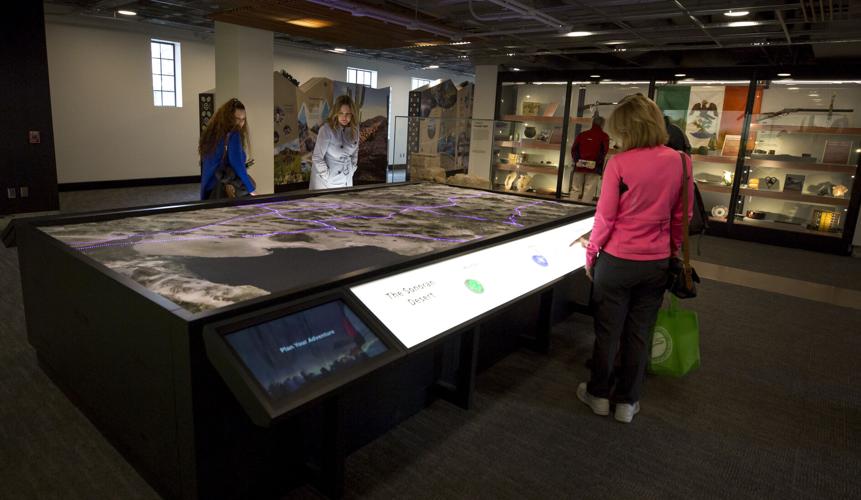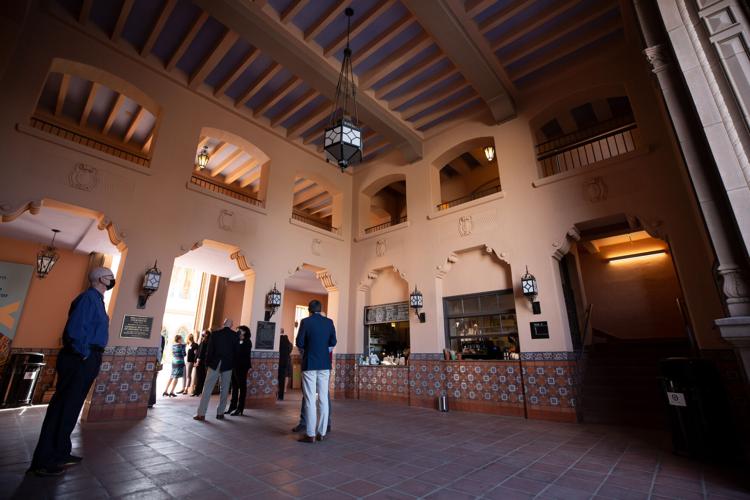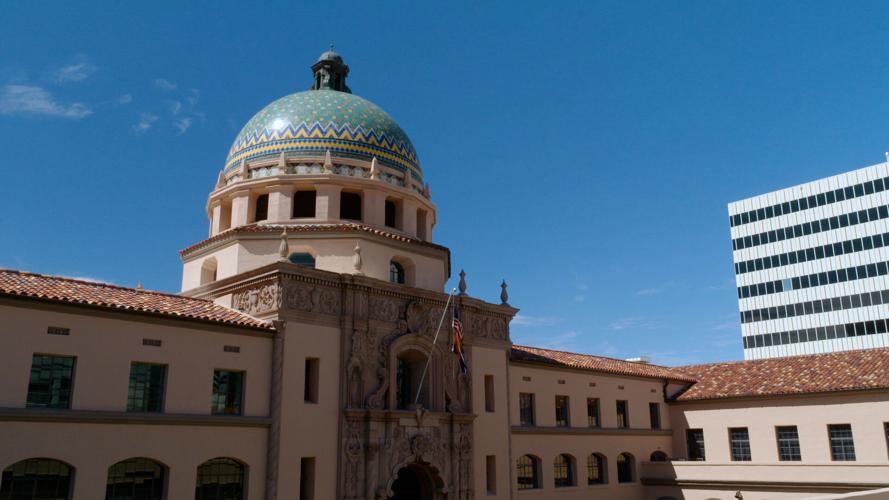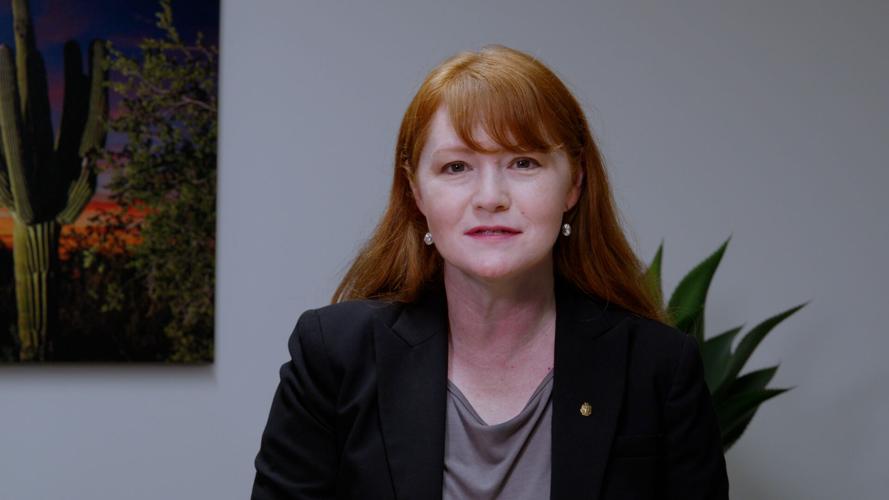The historic Pima County courthouse has received a major renovation in recent years, culminating in 2021, and is now a newly vibrant public space that serves as an urban hub, an architectural gem and an economic driver for the Tucson region.

Rosemary Bright
More than simply a historic restoration project, the renovation is an inventive adaptation that has breathed new life into a nearly 100-year-old building and its surrounding area within downtown Tucson. It is also one of my favorite places.
The project had been on Pima County’s radar since 2010 and involved unique community partnerships, including bringing in tourism giant Visit Tucson as a partner in 2015. An alliance with the University of Arizona further expanded the functionality of the project and enriched the depth of unconventional local involvement between various entities.

Chuck Huus, from Maine, takes a closer look at a display at the Alfie Norville Gem and Mineral Museum. The museum is dedicated to the preservation of minerals and meteorites and to educate the public.
As a community hub, the historic Pima County courthouse encompasses some amazing amenities. The world-class gemological specimens housed in the Alfie Norville Gem and Mineral Museum dazzle the eye and incite the imagination. I have had a lifelong interest in gems and minerals, which makes this portion of the project even more magical to me on a personal level. Also housed within are Visit Tucson’s new headquarters, as well as the Southern Arizona Heritage and Visitor Center, and the University of Arizona’s Research Innovation and Impact, which houses research laboratories and expanded programs, including the RRUF Project database, which provides a global treasure trove of mineral data. Additionally, the project sits adjacent to the culturally significant January 8th memorial.
From an academic perspective, the history and architecture of the building are incredibly intriguing. The courthouse was originally designed by Roy Place and constructed in 1929, then expanded in 1954, and received its “historic” designation in 1978 from the National Register of Historic Places. The courthouse was dubbed the “most outstanding Spanish Colonial Revival building in Arizona,” and locals recognize its prominent tiled dome, which is portrayed in the official Pima County logo.

Chuck Huus, from Maine, takes a closer look at a display at the Alfie Norville Gem and Mineral Museum. The museum is dedicated to the preservation of minerals and meteorites and to educate the public.
Throughout its history, the courthouse has borne witness to some of the region’s most significant trials, most notably the John Dillinger trial in 1934. The Dillinger courtroom has now been restored and is open to the public for the first time, including an exhibit with historic artifacts and information. Other historic aspects of note: the courthouse has been visited by celebrities such as Clark Gable (as a defendant in 1954,) and Johnny Depp (also a defendant in 1991), who would later play John Dillinger in the 2009 film, “Public Enemies.” This historic landmark has been featured in several blockbuster films, including “A Kiss Before Dying” in 1956 and “A Star is Born” in 1976.

The historic Pima County courthouse culminates in the best the region has to offer, highlighting Tucson’s robust tourism industry, natural beauty and culture, and geological and academic proficiency in the area of gems and minerals.
In addition to the history embodied in the project, the quality and execution of the design and construction of this historic renovation are inspiring. Architects Poster Mirto McDonald did a fabulous job with their project assessment and commitment to the historic aspects of the original building, collaborating closely with historians, artisans and structural engineers. They managed to balance their dedication to the historic with utilization of new technology in the design of the renovated space to enhance its new functions. An example of this is the utilization of fiber mesh reinforcing on top of the concrete deck to support the weight of new display cases in the flooring overlay.
It also bears mentioning that the final phase of the project was built by my team at Lloyd Construction, which certainly contributes to my level of excitement about the construction. In addition to the renovation and historic courtroom refurbishment, including high-end artisanal finishes and creative millwork and plaster finishing, the museum-quality design and buildout of the attractions housed within the building merited the involvement of more specialists, including designers Ralph Appelbaum and Associates, and exhibit fabricators Design and Production Inc. Knowing the backstory behind the project and the high level of collaboration required of the design and construction team further enhances my appreciation of the building from an architectural perspective.

The courthouse was dubbed the “most outstanding Spanish Colonial Revival building in Arizona,” and locals recognize its prominent tiled dome, which is portrayed in the official Pima County logo.
All in all, the functions brought together under the very iconic roof of the historic Pima County courthouse culminate in the best the region has to offer, highlighting Tucson’s robust tourism industry, natural beauty and culture, and geological and academic proficiency in the area of gems and minerals.
Tucson Landmarks: The Pima County Historic Courthouse sits downtown at 115 N. Church Ave. Designed in 1929, the courthouse stood for 86 years before renovations took it to its modern state.
This brightly-domed building obtained its “historic” designation from the National Register of Historic Places in 1978. Over the years, the Courthouse has had many tenants, including the Sheriff’s Department, the School Superintendent’s Office and the Superior Court. Today, it houses offices for Pima County Attractions & Tourism, Pima County Administration, Visit Tucson, the Southern Arizona Heritage and Visitor Center and the University of Arizona Alfie Norville Gem and Mineral Museum.


